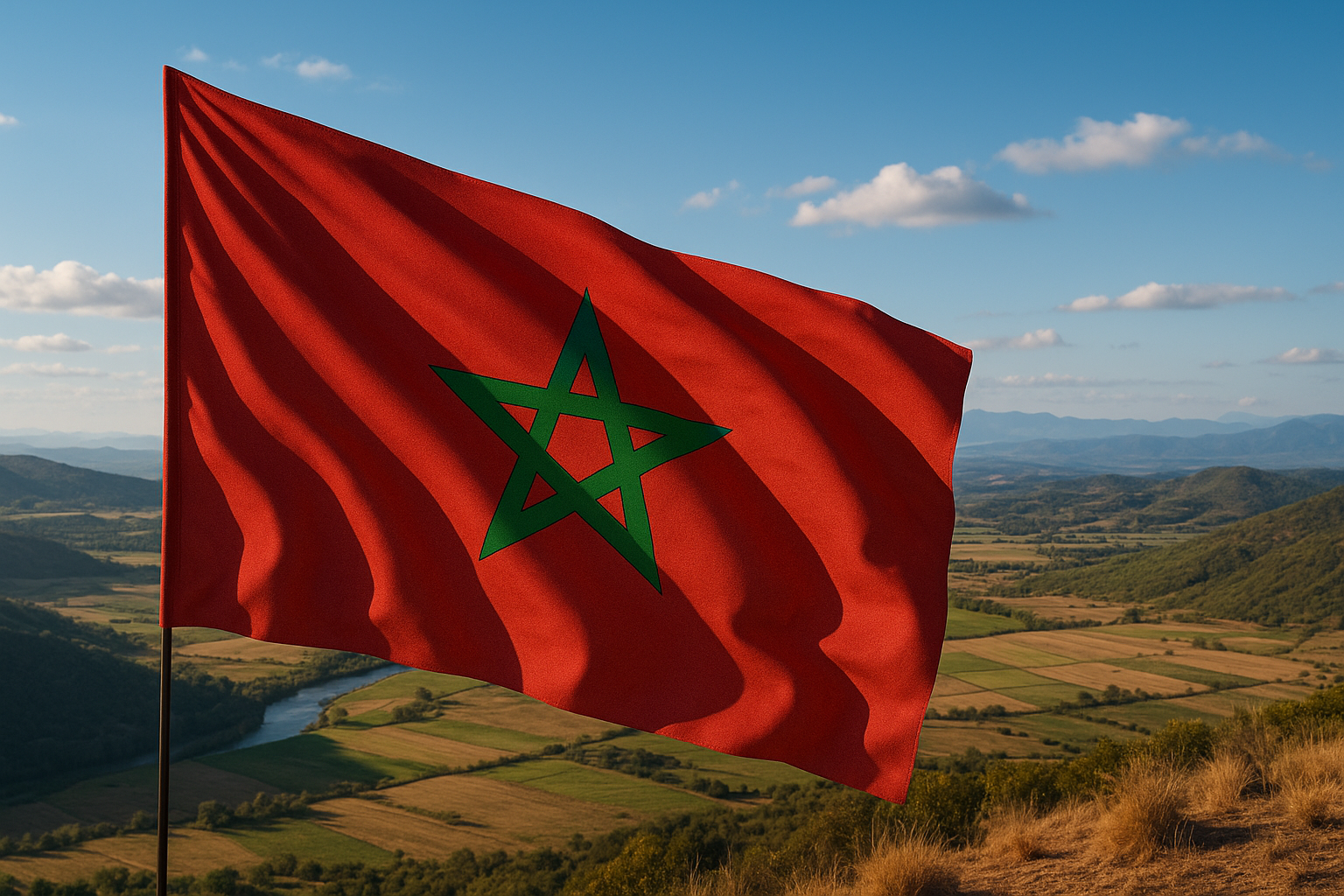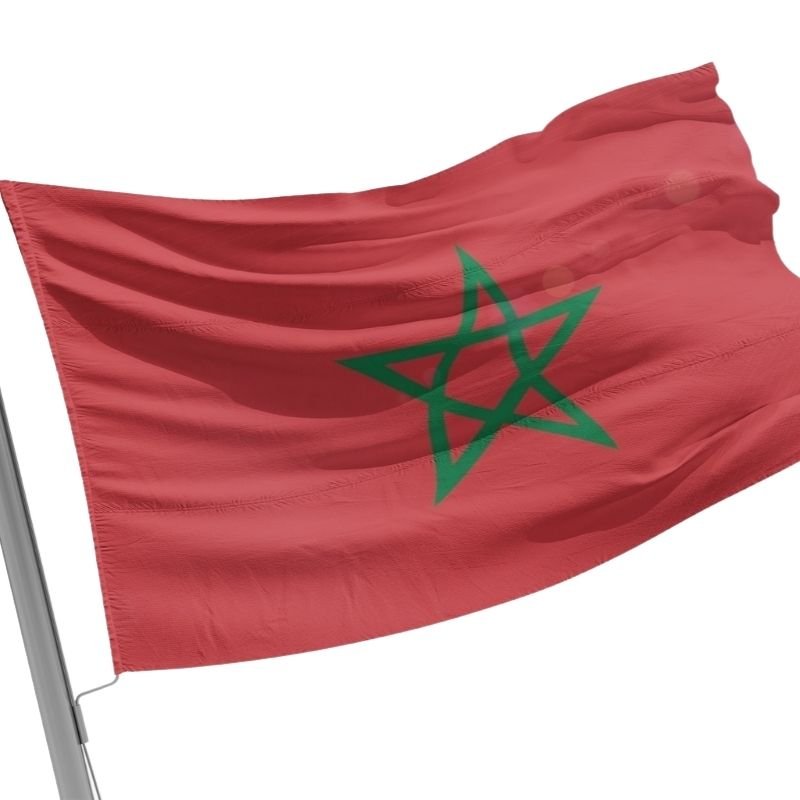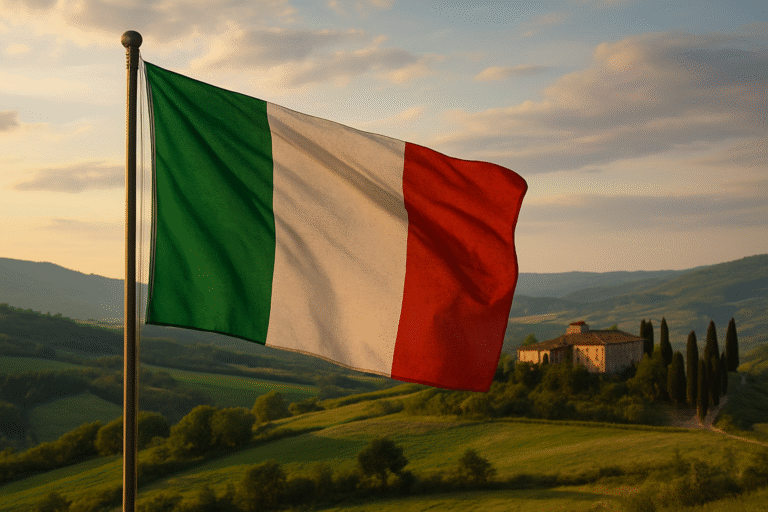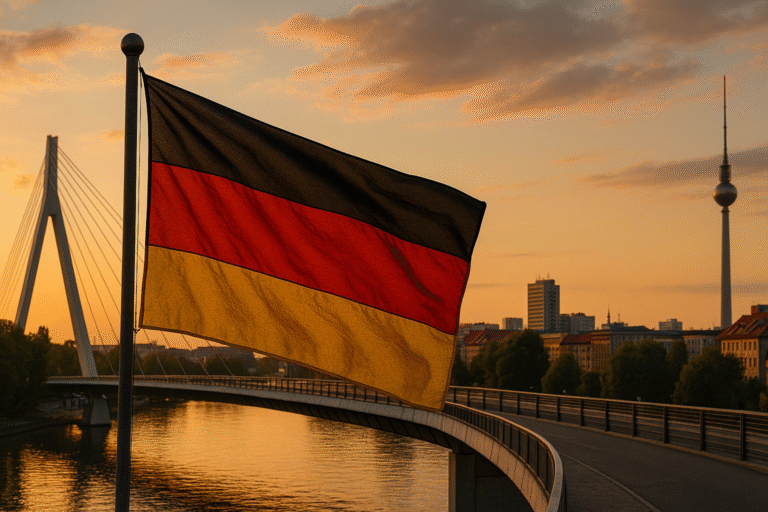
Bandiera del Marocco: Colori, significato, storia, origine
La bandiera del Marocco è caratterizzata da un suggestivo sfondo rosso con un'importante stella verde a cinque punte al centro. Questo elegante disegno, adottato ufficialmente il 17 novembre 1915, rappresenta secoli di eredità marocchina e identità nazionale. I colori vivaci della bandiera e il caratteristico pentagramma riflettono le profonde tradizioni islamiche del Paese, la storia reale e i valori culturali che hanno plasmato questa nazione nordafricana.
Riepilogo rapido
La bandiera marocchina è caratterizzata da un suggestivo sfondo rosso con al centro una stella verde a cinque punte (pentagramma). Adottata ufficialmente il 17 novembre 1915, questa bandiera rappresenta il ricco patrimonio e l'identità nazionale del Marocco, mantenendo una notevole coerenza attraverso importanti transizioni storiche.
Lo sfondo rosso simboleggia il coraggio, la forza e il sacrificio, collegandosi sia agli stendardi tradizionali della dinastia alauita sia al sangue versato per difendere la patria. Il vibrante pentagramma verde (Sigillo di Salomone) rappresenta i Cinque Pilastri dell'Islam, la pace, la speranza e la protezione. Il suo preciso disegno geometrico riflette i contributi storici del Marocco alla matematica e all'astronomia.
Storicamente, la bandiera si è evoluta dalle prime influenze islamiche e da vari emblemi dinastici prima di assumere la forma attuale durante il periodo del Protettorato francese. Nonostante la presenza straniera, il Marocco ha mantenuto questo potente simbolo dell'identità nazionale, dimostrando una capacità di resistenza culturale.
Evoluzione storica della bandiera marocchina
La storia della bandiera del Marocco si intreccia con il complesso sviluppo politico e culturale della nazione nel corso di molti secoli. Il percorso che ha portato al disegno attuale riflette sia la continuità con la tradizione che l'adattamento ai tempi che cambiano.
La prima influenza islamica
Quando gli eserciti islamici si espansero verso ovest attraverso il Nord Africa nell'Alto Medioevo, portarono con sé tradizioni di bandiere che continuano a influenzare la vessillologia marocchina ancora oggi. L'uso del rosso come colore dominante iniziò in questo periodo, con varie dinastie islamiche che adottarono vessilli rossi come simbolo di autorità e protezione.
Bandiere dinastiche nella storia
Nel corso della storia del Marocco, le diverse dinastie regnanti hanno utilizzato bandiere distintive per rappresentare la loro autorità. Prima del design attuale, le bandiere del Marocco erano tipicamente caratterizzate da tinte unite o da semplici motivi geometrici piuttosto che da immagini complesse. La dinastia alauita, che ha governato il Marocco dal XVII secolo e continua a governare fino ad oggi, inizialmente utilizzava diverse bandiere rosse che si sono evolute nel tempo.
Adozione della bandiera attuale (1915)
La moderna bandiera marocchina fu adottata ufficialmente il 17 novembre 1915, durante i primi anni del Protettorato francese. Nonostante l'influenza straniera nel Paese in quel periodo, il disegno della bandiera rimase distintamente marocchino. Il sultano Yusef ben Hassan (che regnò dal 1912 al 1927) formalizzò l'attuale disegno con lo sfondo rosso e il pentagramma verde centrato. Questa scelta progettuale rappresentava sia la continuità con l'uso tradizionale delle bandiere rosse del Marocco, sia l'incorporazione della stella a cinque punte come simbolo dal profondo significato culturale e religioso.
Ciò che rende particolarmente degna di nota l'adozione del 1915 è il fatto che il Marocco abbia mantenuto questo potente simbolo dell'identità nazionale durante un periodo di influenza straniera, evidenziando la resilienza dell'identità culturale marocchina anche in circostanze storiche difficili. La bandiera è rimasta invariata dalla sua adozione, fungendo da simbolo costante durante la transizione del Marocco verso l'indipendenza nel 1956 e il suo continuo sviluppo come nazione moderna.
Elementi di design e simbolismo
La bandiera marocchina combina la semplicità con un significato profondo attraverso i suoi colori accuratamente selezionati e il suo emblema singolare. Questo design accurato comunica i valori fondamentali e l'identità storica della nazione attraverso il linguaggio visivo.
Lo sfondo rosso
Il vibrante sfondo rosso domina la bandiera marocchina, creando un simbolo nazionale immediatamente riconoscibile. Questa profonda tonalità cremisi ha molteplici significati nella cultura e nella storia del Marocco. In primo luogo, il rosso simboleggia il coraggio, la forza e il valore, qualità profondamente rispettate nella società marocchina. Il colore rappresenta anche la durezza e il sangue versato dai marocchini per difendere la loro patria durante secoli di sfide.
Il rosso ha un ulteriore significato storico in quanto si collega agli stendardi tradizionali della dinastia alauita e al mondo arabo in generale, dove questo colore compare spesso negli emblemi nazionali. Alcuni storici notano anche che la particolare tonalità di rosso potrebbe fare riferimento ai discendenti del Profeta Maometto, riflettendo la profonda eredità islamica del Marocco e la legittimità religiosa della sua monarchia.
Il Pentagramma verde
Al centro del campo rosso si trova una caratteristica stella verde a cinque punte, nota come Sigillo di Salomone o pentagramma di Salomone. Questa stella geometrica perfetta è stata creata estendendo cinque linee dalle punte di un pentagono regolare, ottenendo il caratteristico motivo a intreccio. La stella è centrata e dimensionata con precisione per creare un perfetto equilibrio visivo sullo sfondo rosso.
La collocazione del pentagramma al centro della bandiera ne sottolinea l'importanza per l'identità nazionale marocchina. Le cinque punte della stella sono state interpretate per rappresentare i Cinque Pilastri dell'Islam, rafforzando la forte base islamica del Marocco. Le linee pulite e la precisione matematica del pentagramma riflettono anche l'importanza della conoscenza, della saggezza e del pensiero razionale nella tradizione islamica.
Il significato dei colori nella cultura marocchina
La combinazione di colori rosso e verde ha un peso culturale che va al di là dei loro singoli significati. Nel contesto marocchino, il verde simboleggia la pace, la speranza e la rigogliosa fertilità di alcune zone del Paese. È anche il colore tradizionale dell'Islam, che collega la bandiera all'identità religiosa del Marocco e al suo ruolo storico di centro di studi e di governo islamico.
Insieme, questi colori creano una potente dichiarazione visiva dei valori marocchini. Il vibrante contrasto tra il campo rosso e la stella verde assicura che la bandiera sia visibile e distintiva, anche da lontano. Questa combinazione è diventata così strettamente associata al Marocco che questi colori compaiono in tutta l'architettura, l'arte e le celebrazioni culturali marocchine, estendendo il simbolismo della bandiera alla vita quotidiana.
Il significato del Pentagramma
La stella verde a cinque punte al centro della bandiera del Marocco porta con sé strati di significato che si collegano al patrimonio spirituale, al percorso storico e all'identità culturale della nazione. Questo simbolo distintivo è diventato sinonimo di sovranità e valori marocchini.
Origini storiche della Stella a Cinque Punte
Il pentagramma utilizzato nella bandiera marocchina ha radici antiche che precedono il suo uso nazionale. Conosciuto in Marocco come Sigillo di Salomone (Khatim Sulayman), questo simbolo fa riferimento al saggio re biblico e coranico venerato nelle tradizioni islamica, ebraica e cristiana. Il pentagramma è apparso nel corso della storia marocchina nell'architettura, nei manoscritti e nelle arti decorative molto prima della sua adozione nella bandiera nazionale.
Quando l'attuale disegno della bandiera fu formalizzato nel 1915, il pentagramma fu scelto come simbolo che rappresentava sia l'eredità religiosa che la protezione. I documenti storici indicano che il simbolo fu scelto con intenzionalità, rappresentando sia la guida divina sia il ruolo della monarchia come forza protettiva per la nazione. Alcuni studiosi suggeriscono che l'incorporazione della stella rifletta anche la posizione storica del Marocco al crocevia di varie culture mediterranee e africane, dove il pentagramma è apparso in contesti diversi.
Significato religioso e culturale
Nella tradizione islamica, che plasma profondamente la cultura marocchina, le cinque punte della stella sono spesso interpretate come rappresentanti dei Cinque Pilastri dell'Islam: fede (shahada), preghiera (salat), carità (zakat), digiuno (sawm) e pellegrinaggio (hajj). Questo collegamento sottolinea l'identità del Marocco come nazione musulmana in cui i principi religiosi informano il governo e la vita quotidiana.
Al di là delle interpretazioni strettamente religiose, nella cultura marocchina il pentagramma simboleggia l'equilibrio tra Dio e i quattro elementi della natura. Ciò riflette la visione tradizionale del mondo marocchino che enfatizza l'armonia tra i regni spirituale e materiale. La perfetta simmetria geometrica della stella rappresenta anche l'equilibrio, la giustizia e la precisione matematica apprezzata nell'arte e nell'architettura islamica.
Il legame con il patrimonio marocchino
Il pentagramma si collega alla ricca storia del Marocco come centro di studi astronomici e matematici. Durante l'età dell'oro islamica, gli studiosi marocchini hanno dato un contributo significativo in questi campi e la perfezione geometrica del pentagramma onora questo patrimonio intellettuale. Il simbolo compare nelle tradizionali piastrelle marocchine zellige, nelle sculture in legno e nell'artigianato in metallo, a dimostrazione della sua profonda integrazione nelle tradizioni artistiche nazionali.
Per i marocchini moderni, la stella rappresenta l'unità nazionale attraverso diversi contesti regionali e culturali. Dalle montagne del Rif al deserto del Sahara, dai centri urbani alle comunità rurali, il pentagramma funge da emblema unificante che trascende le differenze locali. La posizione del simbolo al centro della bandiera riflette la sua importanza centrale per l'identità nazionale, suggerendo che i valori spirituali e culturali costituiscono il nucleo attorno al quale si organizza la società marocchina.





